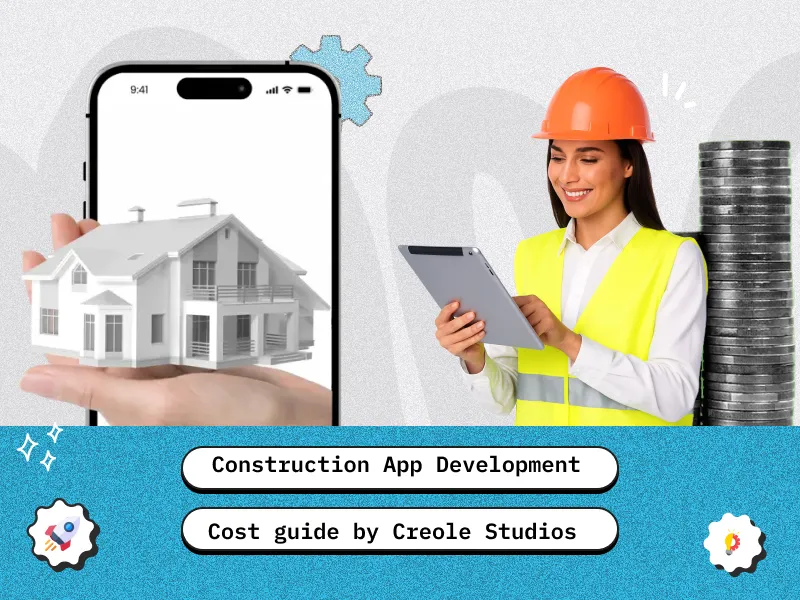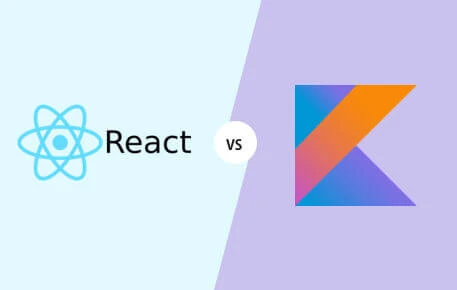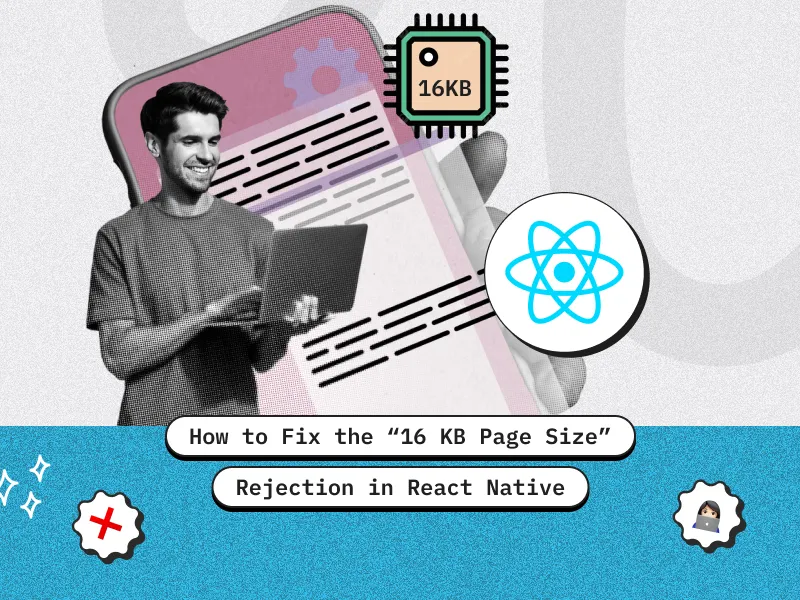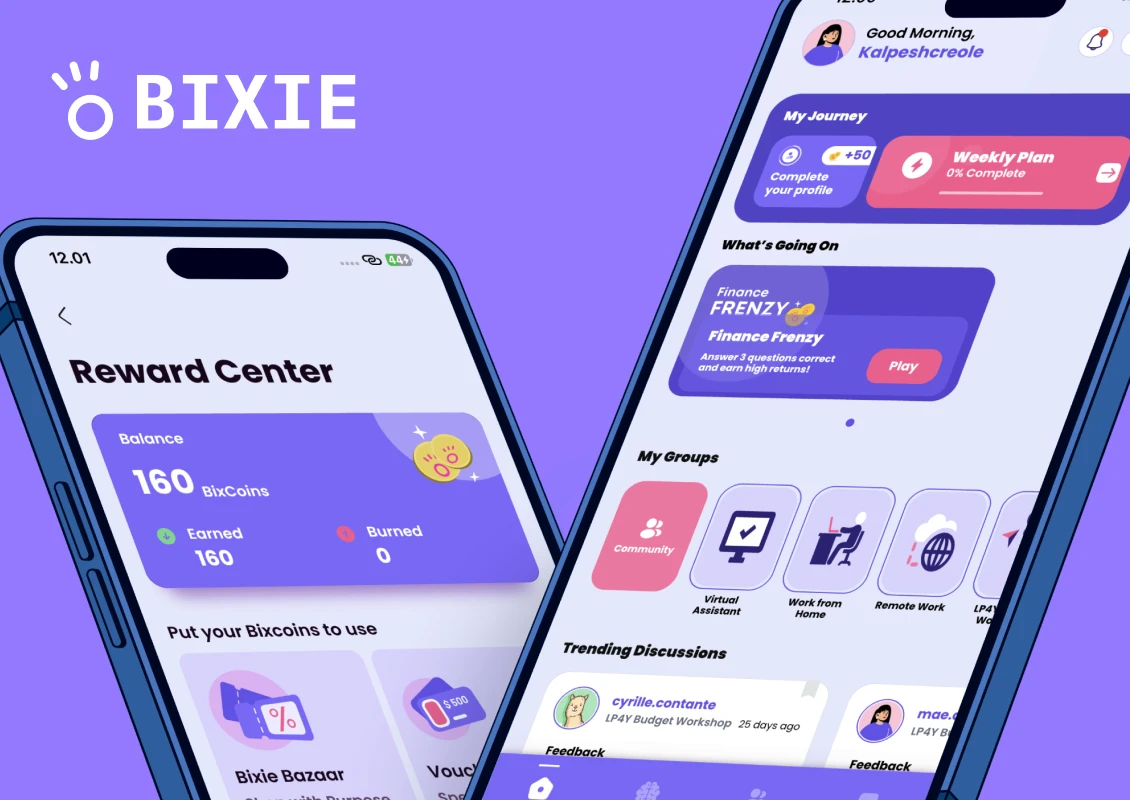TL;DR
- Construction apps streamline project management, field reporting, budgeting, and team collaboration, improving efficiency and safety.
- The construction software market is growing rapidly, driven by cloud, mobile, BIM, and AI adoption.
- Key cost drivers include user roles, offline functionality, 3D/BIM support, third-party integrations, analytics, and security.
- A structured 6-step development process ensures a scalable, user-friendly, and high-performing app.
Introduction
In today’s construction industry, managing projects, teams, and resources efficiently is more challenging than ever, with delays, miscommunication, and cost overruns being common issues. Construction apps streamline workflows, improve collaboration, and provide real-time insights, helping contractors, engineers, and project managers stay on track. From field reporting and scheduling to budgeting and safety compliance, these apps enhance productivity and transparency while reducing errors. Planning your app wisely is crucial, and Creole Studios’ App Development Cost Calculator offers instant, free ballpark estimates based on features and complexity, helping you make informed decisions before development begins.
What is a Construction App?
A construction app is a specialized software solution created to streamline, automate, and centralize various construction-related workflows. These apps help eliminate manual paperwork, reduce communication gaps, and provide real-time access to critical project data from anywhere. They can be simple mobile tools for site inspections, punch lists, and task tracking, or full-scale platforms that manage project scheduling, budgeting, procurement, document control, workforce allocation, safety compliance, and stakeholder communication.
By consolidating these functions, construction apps enable seamless collaboration among contractors, architects, engineers, project managers, field workers, and clients—all through a single, unified digital interface. Many modern construction apps are also cloud-based and mobile-friendly, allowing teams to update progress, share documents, and monitor performance in real time, even from remote sites. This not only enhances productivity and transparency but also reduces delays, rework, and cost overruns throughout the project lifecycle.
Construction App Market Overview
The construction software market has seen rapid and sustained growth over the past few years as the industry increasingly adopts cloud-based, mobile-first, and AI-driven solutions. Valued at approximately $9–11 billion in 2024–2025, the market is expected to grow at a steady compound annual growth rate (CAGR) of around 9–10% in the coming years. This surge is being fueled by the sector’s need to digitize traditionally manual processes and overcome challenges like labor shortages, tight project deadlines, cost overruns, and fragmented communication across project stakeholders.
As construction projects become more complex and globally distributed, companies are looking for integrated digital platforms that offer real-time collaboration, data analytics, and workflow automation. Additionally, the rise of IoT-enabled equipment, Building Information Modeling (BIM), and AI-powered predictive analytics has further accelerated the adoption of construction apps. These technologies help companies monitor field operations in real time, predict delays or risks, and optimize resource allocation, leading to higher productivity, improved safety, and significant cost savings.
With this ongoing digital transformation, construction apps are no longer optional tools but essential strategic assets for modern construction businesses aiming to stay competitive and profitable.
Key Types of Construction Apps
Construction apps come in several forms, each built to solve specific challenges in the project lifecycle. Below are the five most widely used types:
- Project Management & Collaboration Apps
These apps act as a central hub for planning, scheduling, task management, and document sharing. They connect office and field teams in real time, ensuring everyone stays aligned on deadlines, responsibilities, and project updates. - Field Reporting & Inspection Apps
Designed for on-site use, these apps simplify daily logs, site inspections, punch lists, and safety audits. They allow field teams to capture photos, annotate issues, and submit reports instantly, reducing paperwork and speeding up approvals. - Estimating & Bidding Apps
These tools help contractors create accurate cost estimates, takeoffs, and bid proposals. They make it easier to evaluate vendor quotes, forecast project budgets, and win bids more competitively while reducing financial risks. - Resource & Workforce Management Apps
These apps help project managers assign tasks, track crew hours, monitor productivity, and manage labor allocation. By optimizing workforce planning, they reduce idle time and improve overall site efficiency. - Safety & Compliance Apps
Focused on incident reporting, safety checklists, and regulatory compliance, these apps help enforce safety protocols and minimize workplace accidents, while ensuring legal and industry standards are met.
Each of these app types serves a distinct function and varies in complexity, integrations, and cost, making it crucial to define your goals before starting development.
Want to know industrial app development costs?
Here are complete cost breakdowns of some popular industry-focused applications:
Key Features Influencing Construction App Development Costs
The cost of a construction app is strongly influenced by the features it includes. Each feature adds development complexity, testing requirements, and ongoing maintenance considerations. Understanding these cost drivers helps businesses plan their budget and prioritize features effectively. For instance, many companies prioritize time tracking for construction businesses to improve workforce productivity and billing accuracy—an area where industry-leading tools have already set strong benchmarks.
Here are the most critical features that impact construction app development costs:
- Role-Based Access & Permissions
Construction apps typically serve multiple stakeholders, including project managers, contractors, engineers, inspectors, and clients. Implementing custom user roles, access controls, and dashboards ensures that each user sees only relevant information and can perform permitted actions. This adds complexity to both the app’s backend and user interface, increasing development time and testing requirements. - Offline Mode & Data Synchronization
Construction sites often face limited or unreliable internet connectivity, making offline functionality crucial. Developers must build local storage systems, background sync mechanisms, and conflict-resolution logic to ensure data remains accurate and consistent. While essential for on-site efficiency, this feature adds considerable development effort. - BIM & 3D Model Support
Many construction apps now include BIM viewing, 3D model visualization, and AR overlays to improve planning, collaboration, and clash detection. These features require advanced rendering engines, large file handling, and optimized performance, which significantly increases development cost and technical complexity. - Third-Party Integrations
Connecting the app with ERP systems, accounting software, CRM platforms, IoT devices, or supply-chain tools enhances its functionality. However, each integration requires custom APIs, secure data handling, and extensive testing, adding to both time and cost. Well-integrated apps save operational effort but demand more upfront investment. - Real-Time Collaboration & Notifications
Features like in-app messaging, push notifications, live updates, and shared workspaces enable seamless communication between office and field teams. Building these tools requires a scalable backend, real-time data architecture, and robust server infrastructure, which can substantially impact the budget. - Analytics & Reporting
Dashboards, KPIs, and custom reports provide data-driven insights to track progress, monitor costs, and improve decision-making. Implementing analytics involves backend processing, data storage, visualization tools, and interactive UI design, all of which increase development complexity. - Security & Compliance
Construction apps often handle sensitive project, financial, and employee data, requiring strong security measures. Features like data encryption, secure logins, audit trails, and compliance with industry regulations are essential for protecting information, but also add to the development cost and ongoing maintenance.
Step-by-Step Construction App Development Process
Developing a construction app involves several structured stages, each essential to delivering a high-quality, scalable, and user-friendly solution. A clear process helps manage costs, ensure functionality, and maximize ROI.
1. Discovery & Research
This stage focuses on understanding business goals, target users, workflows, and competitors. Insights from research help define key pain points, user needs, and app objectives, forming the foundation for the project.
2. Product Definition & MVP Planning
Based on research, the team identifies the core features for a Minimum Viable Product (MVP). Prioritizing essential features and mapping user journeys ensures the app addresses critical needs while keeping development cost-effective.
3. UI/UX Design
Designing an intuitive interface is crucial, especially for field workers who need fast, easy-to-use tools. Prototypes and interactive mockups are created to ensure the app is clear, practical, and visually effective on-site.
4. Architecture & Development
Developers plan the technical architecture, database structures, offline workflows, and integrations. The development phase includes building backend APIs, mobile/web apps, dashboards, and advanced features like real-time collaboration or 3D model support.
5. Testing & Pilot Launch
Rigorous testing ensures the app is functional, reliable, and user-friendly. A pilot launch on actual construction sites identifies usability issues and performance bottlenecks, allowing refinements before full deployment.
6. Deployment & Ongoing Maintenance
The app is deployed on app stores or internally, and users are onboarded with training. Continuous maintenance includes bug fixes, updates, performance optimization, and feature enhancements, typically accounting for 15–20% of the initial development cost annually.
In summary, following a structured 6-step process ensures your construction app is efficient, secure, user-friendly, and scalable, providing long-term value while managing development costs.
Quick Read: The Complete Guide to Real Estate App Development in 2025
Why Choose Creole Studios for Your Construction App
Creole Studios has proven expertise in building scalable, high-performance construction solutions that cater to the unique needs of the construction industry. Here’s why we stand out:
- Domain Knowledge – We have deep insights into construction workflows and processes, enabling us to design apps that function seamlessly on-site, improve efficiency, and streamline communication across teams.
- End-to-End Services – From concept ideation and UI/UX design to development, integrations, deployment, and ongoing support, we handle every stage of the app development lifecycle, ensuring consistency and high quality throughout.
- Integration Expertise – Our team is skilled at connecting apps with ERP systems, BIM tools, accounting platforms, and project management software, allowing for smooth data flow and centralized operations across multiple systems.
- User-Centric Design – We prioritize the user experience, creating intuitive and easy-to-navigate interfaces optimized for field conditions, including offline functionality, so teams can stay productive even in remote locations.
- Secure Architecture – With strong security practices, we ensure data integrity, privacy, and regulatory compliance, safeguarding sensitive project, financial, and employee information.
- Agile & Transparent Process – We follow an agile development methodology, delivering features in sprints, prioritizing MVP functionality, and maintaining transparent communication, so you are informed and involved at every stage.
- Planning Tools & Consultation – To help you plan your app development effectively, we offer our App Development Cost Calculator, which provides instant, free ballpark estimates based on features and complexity. Additionally, we provide a free 30-minute consultation to discuss your project requirements, suggest the most effective approach, and guide you toward building a high-performing, cost-efficient construction app tailored to your business.
Conclusion
Construction apps are transforming project management by enabling faster decisions, enhancing safety, and boosting productivity. They streamline workflows, automate tasks, and provide real-time insights, reducing delays and errors. While development costs vary depending on complexity and features, investing in a well-designed app ensures long-term benefits. Using tools like an App Development Cost Calculator can help you free ballpark estimate your budget and plan features effectively, ensuring a scalable, secure, and user-friendly solution that supports maximum efficiency and future growth in construction projects.
FAQs
1. What is an app in construction?
It’s a mobile or web tool designed to manage various construction tasks such as scheduling, inspections, budgeting, and field communication, making projects more efficient and collaborative.
2. Is there an AI for construction?
Yes, AI is used in construction for progress tracking, risk analysis, automated procurement, safety monitoring, and predictive scheduling, helping improve accuracy and productivity.
3. What is the best construction software for small builders?
Small builders often prefer lightweight, cost-effective apps that handle scheduling, invoicing, and field reporting. The best options are easy to set up, offer offline support, and scale as the business grows.
4. What is the average cost of building an app?
Basic apps usually cost $40k–$80k, mid-range apps cost $80k–$250k, and complex enterprise-grade apps can exceed $250k–$400k+. Maintenance typically costs an additional 15–20% of the initial development cost each year.











 30 mins free Consulting
30 mins free Consulting 
 12 min read
12 min read 


 Singapore
Singapore 
 USA
USA 
 Finland
Finland 





 Love we get from the world
Love we get from the world 